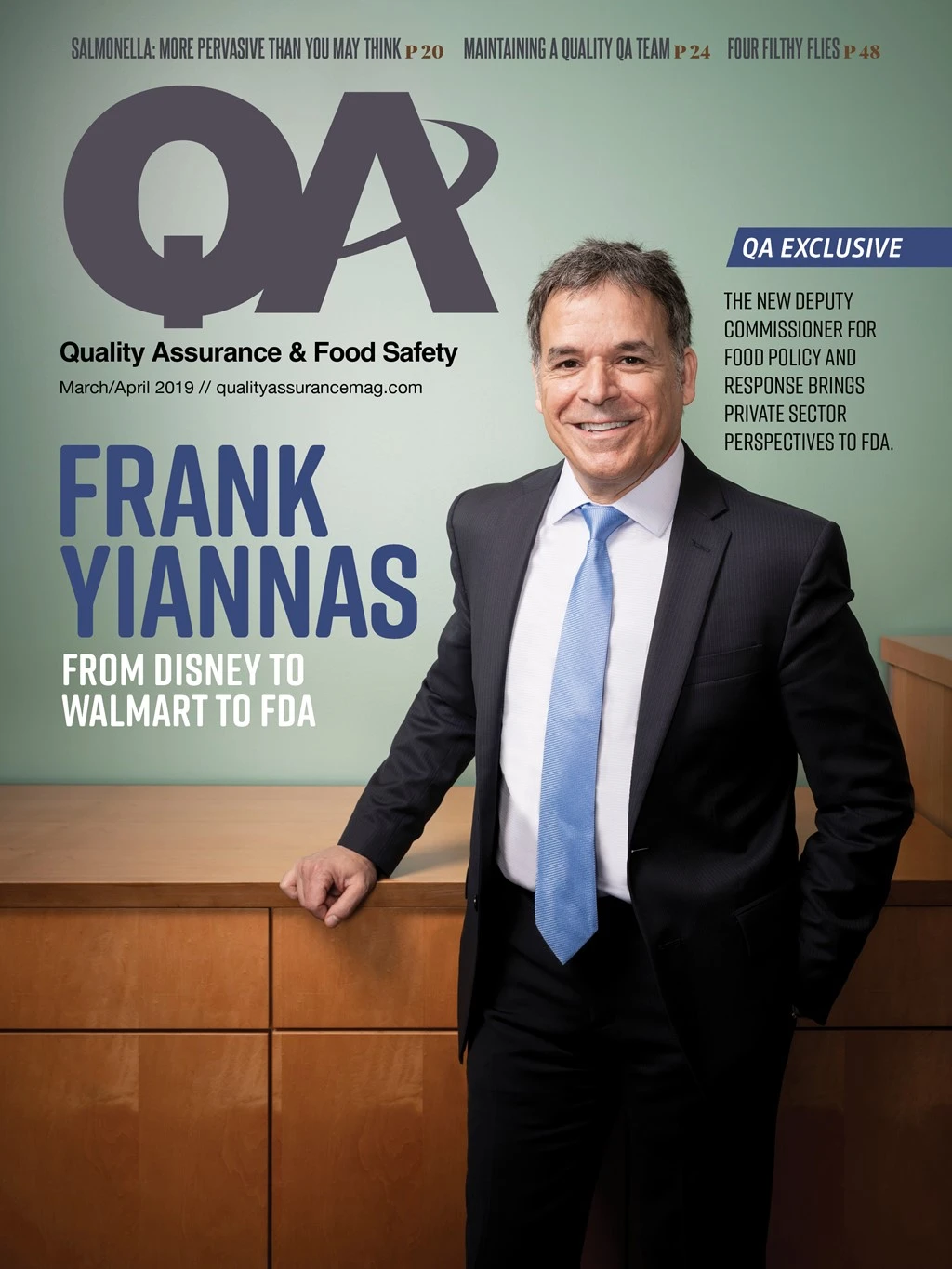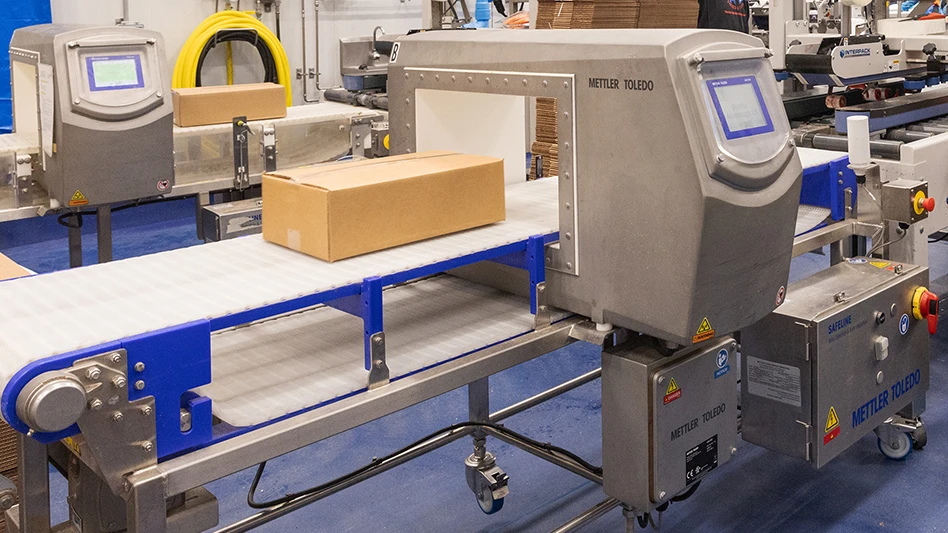

For food processing and packaging facility managers, pest control is inevitably top-of-mind. You’ve probably heard horror stories from peers in the industry and have decided your facility will not, and cannot, fall victim to an infestation of any kind. But, how do you safeguard against a pest invasion?
To help prevent infestations before they have a chance to materialize, facility managers should bring in a pest control professional to help implement an integrated pest management (IPM) plan. Comprised of inspection, identification, and treatment, this holistic approach leverages the partnership between the facility manager and pest control professional (PMP), allowing treatments to be tailored to each facility’s needs. To determine those needs, however, inspection is paramount.
A thorough inspection led by a PMP is essential to curbing and solving potential pest issues past, present, and future. This process includes thorough evaluations with building managers, as well as an examination of the premises — both inside and out — to determine potential vulnerabilities and conditions that may attract pests. Because this step is so crucial in ensuring a pest-free facility, following is a checklist of areas PMPs focus on during inspections to help prepare your facility for future success.
- Building Exterior. The inspection will likely begin on the exterior of the building to ensure no pest harborage or breeding sites can be found, noting any overgrown grass or shrubbery that should be trimmed back away from the building. To avoid moisture buildup that can attract pests, recommendations may be made to ensure proper drainage at the foundation, including the installation of gutters or diverts which will channel water away from the building. Lighting also plays a key role in attracting pests to a facility, and the inspection will determine whether or not you have non-attracting lights, such as sodium vapor bulbs, around the facility.
- Building Interior. The interior inspection will encompass storage areas, equipment centers, processing areas, locker rooms, and more for any signs of an infestation. As part of the IPM approach, the PMP may suggest sealing any cracks or crevices in the structure, including entry points for utilities and pipes, with an appropriate sealant. Improper ventilation is also a concern in food processing plants, so PMPs will check to ensure there is no condensation buildup that could accumulate moisture and attract pests.
- Food Storage Areas. As the inspection moves to food storage areas, professionals will be on the lookout for any signs of damage to boxes and bags, improper storage of empty containers which can provide harborage sites for pests, and overall good housekeeping practices to ensure the food supply is not, and will not be, contaminated. They also will be looking to ensure that both sellable goods and damaged goods are stored properly to minimize the risk of infestation. This includes separating and repackaging damaged goods to prevent contaminating the rest of the food supply, and ensuring any returned goods are handled properly upon receipt to avoid cross contamination. Refrigerators are also a point of concern, and PMPs will ensure these devices are clean and absent of condensation or signs of pest activity.
- Food Processing Areas. In areas where food is processed, professionals will look first and foremost at the equipment itself to determine how easy it is to clean. Enclosed areas of the machine should be easy to access and open for quick cleaning. Areas under and behind equipment should be clean and void of any signs of pest activity. They also will check to ensure that no permanent food storage is in the processing area, as this can lead to cross contamination of either supply.
- Garbage and Trash Areas. You will need to ensure the facility has an adequate waste management system in place. Garbage should be stored in sealed containers at all times and disposed of on a regular basis. If there is a dumpster on the property, it should have a closable lid, not be located near entry points, be emptied frequently, and show evidence of regular cleaning to pass inspection. Indoor trash receptacles also should be emptied regularly and always covered to prevent any pests from getting in, or out, in search of food and nesting items.
- Common Areas and Bathrooms. High-volume areas, such as break rooms and kitchenettes, where crumbs and trash are likely to build up, should be cleaned daily. Bathrooms also will be inspected to ensure all plumbing is functioning properly, and that there are no signs of moisture buildup or an infestation of any kind.
The only surefire way to prevent pest problems in food processing facilities is to take proactive steps to ensure one never has a chance to materialize. Implementing an IPM program is the key to that endeavor, as it allows PMPs to identify potential harborage sites while offering ways to remedy them. To implement a tailored IPM program, be sure to hire a professional pest control company that specializes in commercial properties, specifically food processing and packaging facilities, to conduct a thorough inspection of both the interior and exterior of the building to ensure compliance with national food safety standards. By doing so, you will not only safeguard your facility against future infestations, you will be armed with a trusted partner who has extensive knowledge of your facility, should an infestation occur.

Explore the March 2019 Issue
Check out more from this issue and find your next story to read.
Latest from Quality Assurance & Food Safety
- USDA Announces New Presidential Appointments
- FDA to Phase Out Petroleum-Based Synthetic Dyes in Food
- IFT DC Section to Host Food Policy Event Featuring FDA, USDA Leaders
- CSQ Invites Public Comments on Improved Cannabis Safety, Quality Standards
- Registration Open for IAFNS’ Fifth Annual Summer Science Symposium
- Leaked White House Budget Draft Proposes Shifting Inspection Responsibilities from FDA to States
- Chlorine Dioxide: Reset the Pathogenic Environment
- Ferrero Group Invests $445 Million in Ontario Production Facility






